Sharmin Akter
Generative AI: A Pix2pix-GAN-Based Machine Learning Approach for Robust and Efficient Lung Segmentation
Dec 14, 2024



Abstract:Chest radiography is climacteric in identifying different pulmonary diseases, yet radiologist workload and inefficiency can lead to misdiagnoses. Automatic, accurate, and efficient segmentation of lung from X-ray images of chest is paramount for early disease detection. This study develops a deep learning framework using a Pix2pix Generative Adversarial Network (GAN) to segment pulmonary abnormalities from CXR images. This framework's image preprocessing and augmentation techniques were properly incorporated with a U-Net-inspired generator-discriminator architecture. Initially, it loaded the CXR images and manual masks from the Montgomery and Shenzhen datasets, after which preprocessing and resizing were performed. A U-Net generator is applied to the processed CXR images that yield segmented masks; then, a Discriminator Network differentiates between the generated and real masks. Montgomery dataset served as the model's training set in the study, and the Shenzhen dataset was used to test its robustness, which was used here for the first time. An adversarial loss and an L1 distance were used to optimize the model in training. All metrics, which assess precision, recall, F1 score, and Dice coefficient, prove the effectiveness of this framework in pulmonary abnormality segmentation. It, therefore, sets the basis for future studies to be performed shortly using diverse datasets that could further confirm its clinical applicability in medical imaging.
Unlocking Futures: A Natural Language Driven Career Prediction System for Computer Science and Software Engineering Students
May 28, 2024Abstract:A career is a crucial aspect for any person to fulfill their desires through hard work. During their studies, students cannot find the best career suggestions unless they receive meaningful guidance tailored to their skills. Therefore, we developed an AI-assisted model for early prediction to provide better career suggestions. Although the task is difficult, proper guidance can make it easier. Effective career guidance requires understanding a student's academic skills, interests, and skill-related activities. In this research, we collected essential information from Computer Science (CS) and Software Engineering (SWE) students to train a machine learning (ML) model that predicts career paths based on students' career-related information. To adequately train the models, we applied Natural Language Processing (NLP) techniques and completed dataset pre-processing. For comparative analysis, we utilized multiple classification ML algorithms and deep learning (DL) algorithms. This study contributes valuable insights to educational advising by providing specific career suggestions based on the unique features of CS and SWE students. Additionally, the research helps individual CS and SWE students find suitable jobs that match their skills, interests, and skill-related activities.
SugarcaneNet2024: An Optimized Weighted Average Ensemble Approach of LASSO Regularized Pre-trained Models for Sugarcane Disease Classification
Mar 26, 2024
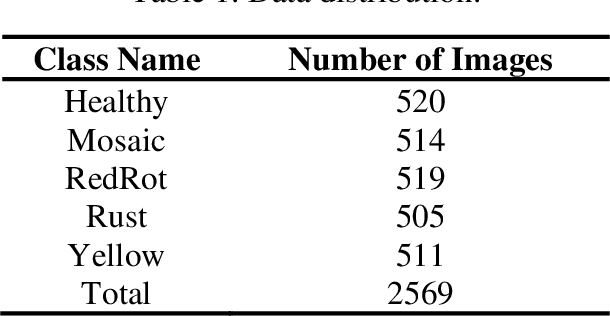
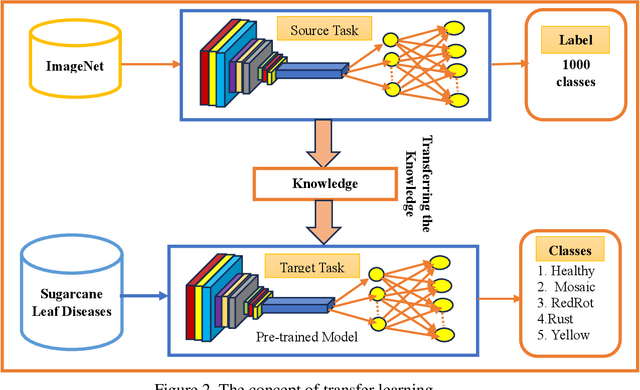

Abstract:Sugarcane, a key crop for the world's sugar industry, is prone to several diseases that have a substantial negative influence on both its yield and quality. To effectively manage and implement preventative initiatives, diseases must be detected promptly and accurately. In this study, we present a unique model called sugarcaneNet2024 that outperforms previous methods for automatically and quickly detecting sugarcane disease through leaf image processing. Our proposed model consolidates an optimized weighted average ensemble of seven customized and LASSO-regularized pre-trained models, particularly InceptionV3, InceptionResNetV2, DenseNet201, DenseNet169, Xception, and ResNet152V2. Initially, we added three more dense layers with 0.0001 LASSO regularization, three 30% dropout layers, and three batch normalizations with renorm enabled at the bottom of these pre-trained models to improve the performance. The accuracy of sugarcane leaf disease classification was greatly increased by this addition. Following this, several comparative studies between the average ensemble and individual models were carried out, indicating that the ensemble technique performed better. The average ensemble of all modified pre-trained models produced outstanding outcomes: 100%, 99%, 99%, and 99.45% for f1 score, precision, recall, and accuracy, respectively. Performance was further enhanced by the implementation of an optimized weighted average ensemble technique incorporated with grid search. This optimized sugarcaneNet2024 model performed the best for detecting sugarcane diseases, having achieved accuracy, precision, recall, and F1 score of 99.67%, 100%, 100%, and 100% , respectively.
An Improved Model Ensembled of Different Hyper-parameter Tuned Machine Learning Algorithms for Fetal Health Prediction
May 26, 2023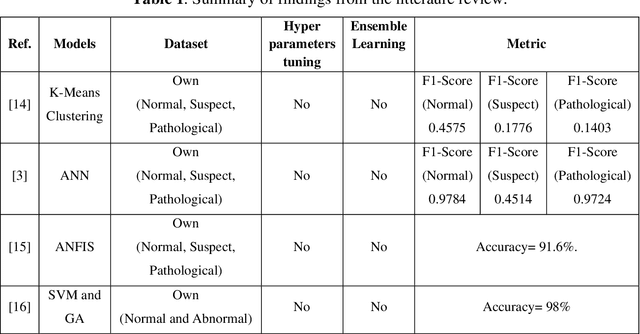
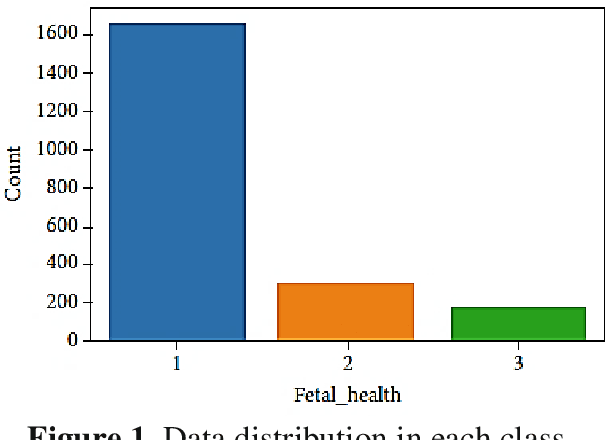

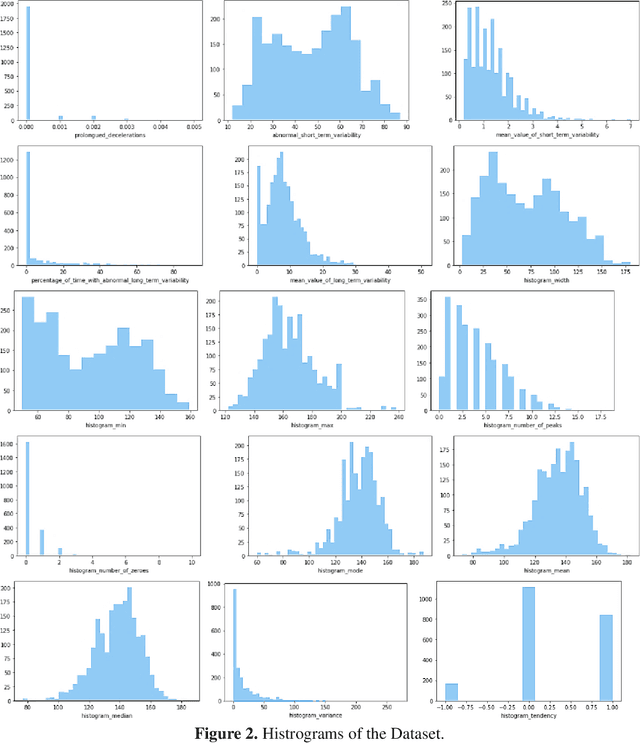
Abstract:Fetal health is a critical concern during pregnancy as it can impact the well-being of both the mother and the baby. Regular monitoring and timely interventions are necessary to ensure the best possible outcomes. While there are various methods to monitor fetal health in the mother's womb, the use of artificial intelligence (AI) can improve the accuracy, efficiency, and speed of diagnosis. In this study, we propose a robust ensemble model called ensemble of tuned Support Vector Machine and ExtraTrees (ETSE) for predicting fetal health. Initially, we employed various data preprocessing techniques such as outlier rejection, missing value imputation, data standardization, and data sampling. Then, seven machine learning (ML) classifiers including Support Vector Machine (SVM), XGBoost (XGB), Light Gradient Boosting Machine (LGBM), Decision Tree (DT), Random Forest (RF), ExtraTrees (ET), and K-Neighbors were implemented. These models were evaluated and then optimized by hyperparameter tuning using the grid search technique. Finally, we analyzed the performance of our proposed ETSE model. The performance analysis of each model revealed that our proposed ETSE model outperformed the other models with 100% precision, 100% recall, 100% F1-score, and 99.66% accuracy. This indicates that the ETSE model can effectively predict fetal health, which can aid in timely interventions and improve outcomes for both the mother and the baby.
An Improved Heart Disease Prediction Using Stacked Ensemble Method
Apr 12, 2023Abstract:Heart disorder has just overtaken cancer as the world's biggest cause of mortality. Several cardiac failures, heart disease mortality, and diagnostic costs can all be reduced with early identification and treatment. Medical data is collected in large quantities by the healthcare industry, but it is not well mined. The discovery of previously unknown patterns and connections in this information can help with an improved decision when it comes to forecasting heart disorder risk. In the proposed study, we constructed an ML-based diagnostic system for heart illness forecasting, using a heart disorder dataset. We used data preprocessing techniques like outlier detection and removal, checking and removing missing entries, feature normalization, cross-validation, nine classification algorithms like RF, MLP, KNN, ETC, XGB, SVC, ADB, DT, and GBM, and eight classifier measuring performance metrics like ramification accuracy, precision, F1 score, specificity, ROC, sensitivity, log-loss, and Matthews' correlation coefficient, as well as eight classification performance evaluations. Our method can easily differentiate between people who have cardiac disease and those are normal. Receiver optimistic curves and also the region under the curves were determined by every classifier. Most of the classifiers, pretreatment strategies, validation methods, and performance assessment metrics for classification models have been discussed in this study. The performance of the proposed scheme has been confirmed, utilizing all of its capabilities. In this work, the impact of clinical decision support systems was evaluated using a stacked ensemble approach that included these nine algorithms
Transformer Based Bengali Chatbot Using General Knowledge Dataset
Nov 09, 2021
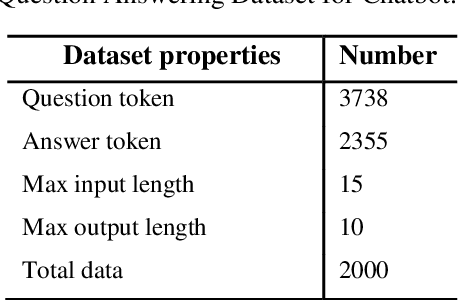
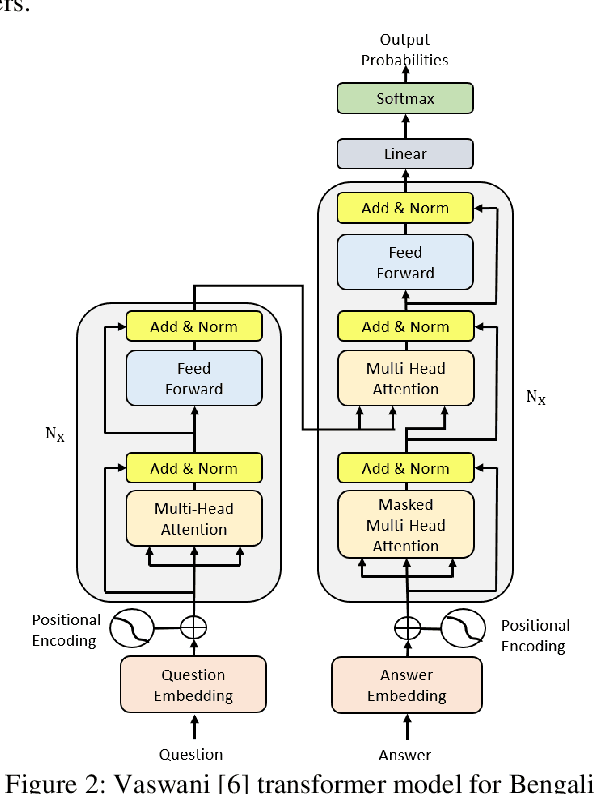
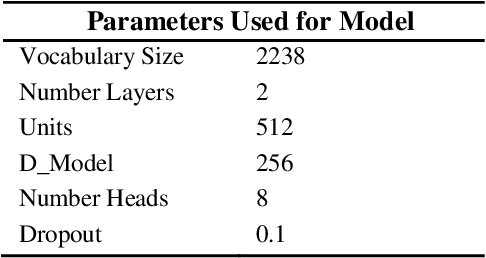
Abstract:An AI chatbot provides an impressive response after learning from the trained dataset. In this decade, most of the research work demonstrates that deep neural models superior to any other model. RNN model regularly used for determining the sequence-related problem like a question and it answers. This approach acquainted with everyone as seq2seq learning. In a seq2seq model mechanism, it has encoder and decoder. The encoder embedded any input sequence, and the decoder embedded output sequence. For reinforcing the seq2seq model performance, attention mechanism added into the encoder and decoder. After that, the transformer model has introduced itself as a high-performance model with multiple attention mechanism for solving the sequence-related dilemma. This model reduces training time compared with RNN based model and also achieved state-of-the-art performance for sequence transduction. In this research, we applied the transformer model for Bengali general knowledge chatbot based on the Bengali general knowledge Question Answer (QA) dataset. It scores 85.0 BLEU on the applied QA data. To check the comparison of the transformer model performance, we trained the seq2seq model with attention on our dataset that scores 23.5 BLEU.
 Add to Chrome
Add to Chrome Add to Firefox
Add to Firefox Add to Edge
Add to Edge